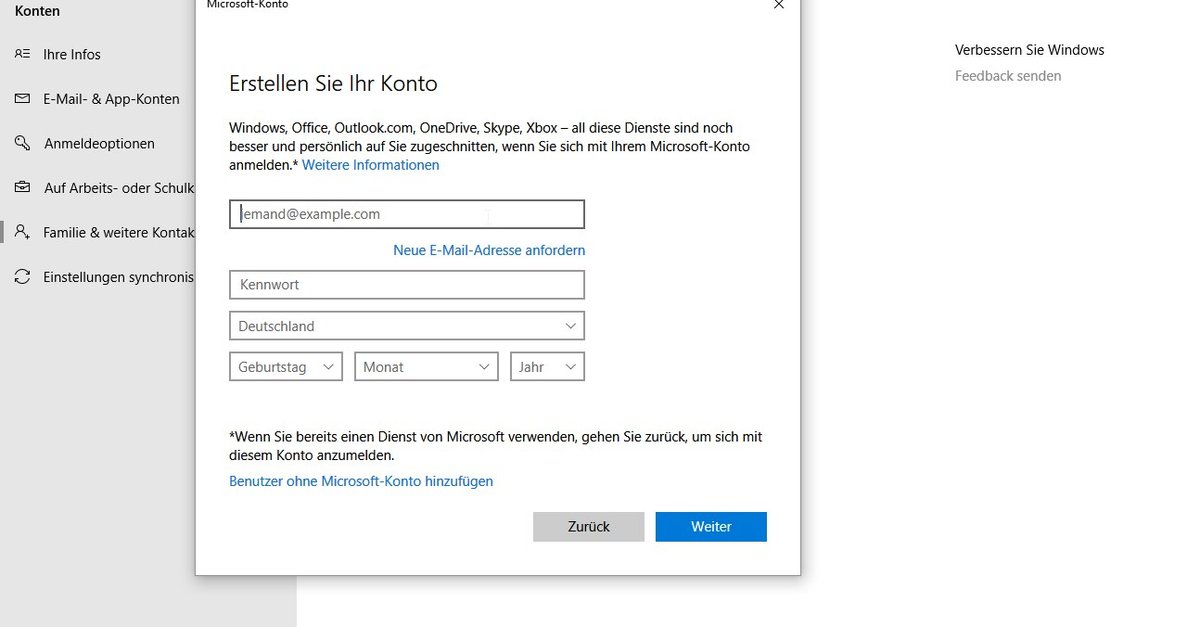Windows 10 Benutzername Andern
Dynasty warriors 8 empires review. Nach der Installation von Windows 10 werden Sie aufgefordert, ein Benutzerkonto zu erstellen. Wird Ihr Computer von mehreren Usern benutzt, so braucht jeder einzelne User ein eigenes Konto. Wie Sie Benutzerkonten unter Windows 10 erstellen und.
-->Windows 10 Benutzername Aendern
Syntax
Description
The Rename-LocalUser cmdlet renames a local user account.
Examples
Example 1: Rename a user account
This command renames the user account named Admin02.
Parameters
Prompts you for confirmation before running the cmdlet.

| Type: | SwitchParameter |
| Aliases: | cf |
| Position: | Named |
| Default value: | False |
| Accept pipeline input: | False |
| Accept wildcard characters: | False |
Specifies the user account that this cmdlet renames.To obtain a user account, use the Get-LocalUser cmdlet.
| Type: | LocalUser |
| Position: | 0 |
| Default value: | None |
| Accept pipeline input: | True (ByPropertyName, ByValue) |
| Accept wildcard characters: | False |
Specifies the name of the user account that this cmdlet renames.
| Type: | String |
| Position: | 0 |
| Default value: | None |
| Accept pipeline input: | True (ByPropertyName, ByValue) |
| Accept wildcard characters: | False |
Specifies a new name for the user account.

| Type: | String |
| Position: | 1 |
| Default value: | None |
| Accept pipeline input: | False |
| Accept wildcard characters: | False |
Specifies the security ID (SID) of a user accounts that this cmdlet renames.
| Type: | SecurityIdentifier |
| Position: | 0 |
| Default value: | None |
| Accept pipeline input: | True (ByPropertyName, ByValue) |
| Accept wildcard characters: | False |

Shows what would happen if the cmdlet runs.The cmdlet is not run.
| Type: | SwitchParameter |
| Aliases: | wi |
| Position: | Named |
| Default value: | False |
| Accept pipeline input: | False |
| Accept wildcard characters: | False |
Inputs
System.Management.Automation.SecurityAccountsManager.LocalUser, System.String, System.Security.Principal.SecurityIdentifier
You can pipe a local user, a string, or a SID to this cmdlet.
Outputs
None
This cmdlet does not generate any output.
Notes
- The PrincipalSource property is a property on LocalUser, LocalGroup, and LocalPrincipal objects that describes the source of the object. The possible sources are as follows:
- Local
- Active Directory
- Azure Active Directory group
- Microsoft Account
PrincipalSource is supported only by Windows 10, Windows Server 2016, and later versions of the Windows operating system. For earlier versions, the property is blank.